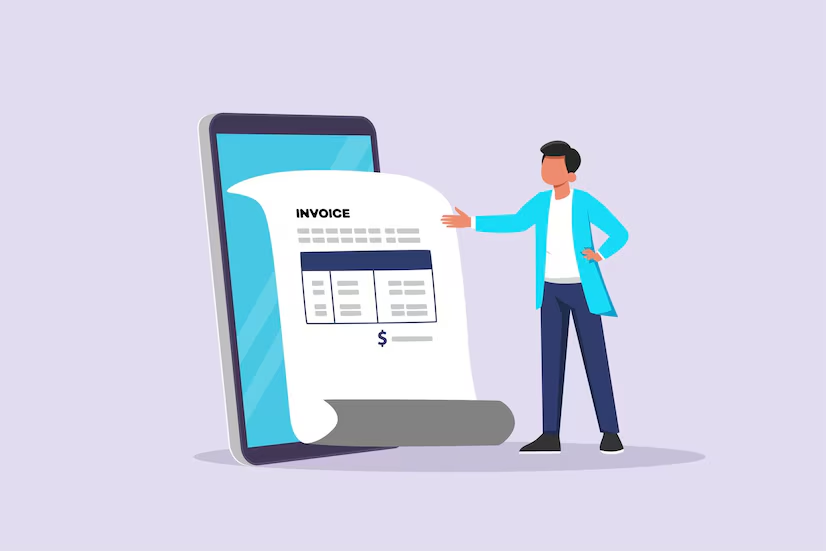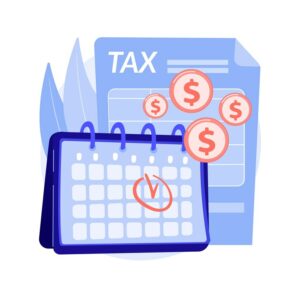How to Apply for ITC with the Updated GST Return Filing System?
- 20 Sep 24
- 10 mins
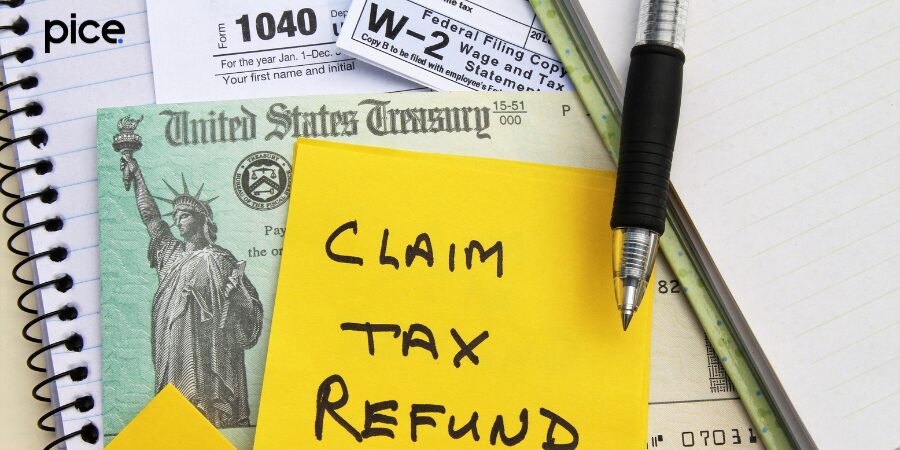
How to Apply for ITC with the Updated GST Return Filing System?
- Comparison of Current and Upcoming GST Return Systems
- ITC Application Process in the Current GST System
- ITC Application Process in the New GST System
- Requirements for Claiming Input Tax Credit
- Deadline for Claiming Input Tax Credit
- Challenges Faced When Claiming Input Tax Credit
- Steps to Claim Input Tax Credit in GSTR 3B
- The Bottom Line
Key Takeaways
- The upcoming GST return filing system aims to streamline return filing and ITC tracking for greater efficiency and user-friendliness.
- The new GST system will regulate ITC claims through e-invoicing, ANX-1, and ANX-2, unlike the current system which limits provisional credit to 105% of eligible ITC.
- The current system requires monthly or quarterly submission of sales information by sellers, while the new system allows real-time invoice uploads viewable by recipients.
- Essential conditions for claiming ITC include GST registration, valid tax invoices, receipt of goods or services, and supplier tax compliance, with certain items ineligible for ITC.
- Timely ITC claims must be made by September of the following year or during annual return filing, necessitating regular monthly reconciliation of GSTR 2B and GSTR 3B.
GST returns refer to official documents that business organisations file to the government. It contains information on taxable supplies made as well as acquired. The Input Tax Credit (ITC) refers to the tax paid on purchased goods or services, which can be deducted from the tax payable on actual sales. The upcoming GST return filing system streamlines the filing of regular returns and simplifies ITC tracking, making the entire process more efficient and user-friendly.
In this blog, you will learn how to claim ITC in GSTR 3B under the new GST return filing system and other crucial details related to it.
Comparison of Current and Upcoming GST Return Systems
Under the GSTR-1 return and GSTR-3B return systems, recipients claim tax credits based on the sales invoices uploaded by their sellers or suppliers. In the current period, provisional credit without invoice upload is limited to 5% of the Input Tax Credit reflected in GSTR-2B (previously GSTR-2A). This differs from the pre-GST regime, where credit was claimed based on purchase invoices in the buyer’s records.
With the new GST return system, Input Tax Credit claims will be regulated through e-invoicing, ANX-1 and ANX-2. Previously, the issue was that purchasers used to claim credit on invoices issued by sellers without verifying if the actual GST liability had been paid to the government. This led to revenue losses for the government. Thus, necessitates a system where purchasers can avail credits once the seller has paid the corresponding taxes to the government.
ITC Application Process in the Current GST System
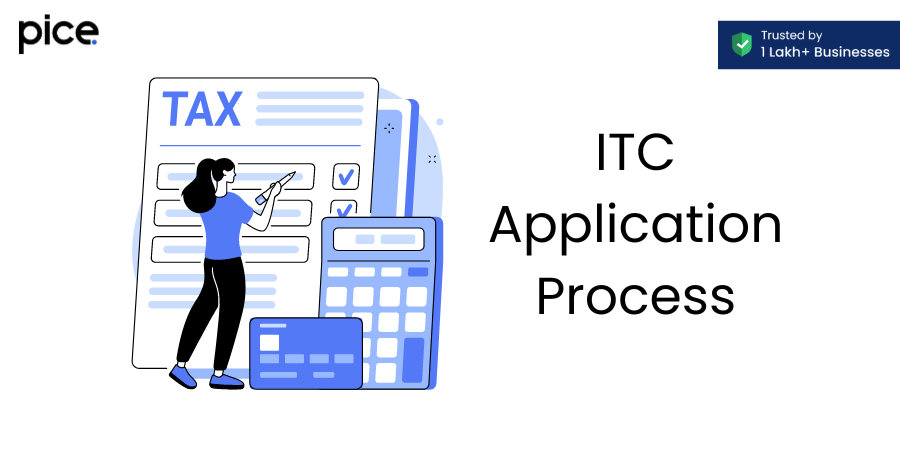
To claim GST credits under the current system, follow these steps:
Step 1: Every month or quarter, the seller submits detailed sales information for each invoice by the 11th day of the next month (or by the 13th of the month following the quarter). This depends on how often the taxpayer files Form GSTR-1 on the GST portal.
Step 2: The buyer can see the seller's uploaded invoices in their GSTR-2B form.
💡If you want to pay your GST with Credit Card, then download Pice Business Payment App. Pice is the one stop app for all paying all your business expenses.
Step 3: The buyer can then claim Input Tax Credit in the GSTR-3B form based on the seller's invoices listed in GSTR-2B. The buyer can claim up to 105% of the eligible ITC for the current tax period. This means they can claim an extra 5% in ITC for invoices or debit notes that the suppliers have not uploaded to GSTR-2B. The suppliers need to update and reconcile these invoices in the subsequent tax periods.
ITC Application Process in the New GST System
The new GST return system operates on a single annual return. It can be RET-1, RET-2 or RET-3, accompanied by two annexures: ANX-1 and ANX-2. Out of these, ANX-2 is quite important as it enables the taxpayers to accept the invoices. It also rejects them or keeps them in a pending list for GST Input Tax Credit. The table below outlines the structure of the new GST return system:
| Annual Turnover | Type of Return |
| Less than ₹5 crore | Regular Quarterly Return GSTR Sahaj Return GSTR Sugam Return |
| More than ₹5 crore | Regular Monthly Return |
Taxpayers with a turnover of less than ₹5 crores will have the option to file quarterly returns, choosing from one of the aforementioned annual turnover return types.
Suppliers can upload invoices at any time during the month, and these will be visible to the recipients in real time. Invoices uploaded by suppliers will automatically appear in an annexure for the recipient’s inward supplies, viewable through the portal’s "viewing facility."
After the 10th of the following month, recipients can take specific actions on these invoices:
- Accept: To avail of the credit
- Reject: If the credit is not needed or the transaction is incorrect
- Pending: To defer the credit to a later period
The accepted credit from invoices will be posted in the input tax credit section of the recipient’s return. After being accepted, these invoices are locked so that no further alterations can be made to them. In case the recipient has many invoices, all invoices will be accepted and locked by default, and the recipient can mark it as pending or reject it.
There will be no automatic reversal of input tax credit if an invoice is uploaded but the tax remains unpaid by the supplier. If the supplier does not pay the tax, then the recovery will be made first to the supplier. However, in some exceptional circumstances like no return filed by the taxpayer, closure of business, inadequate supplier property, or fake or exaggerated claims by the recipient, other forms of recovery mechanisms may be applicable.
Requirements for Claiming Input Tax Credit
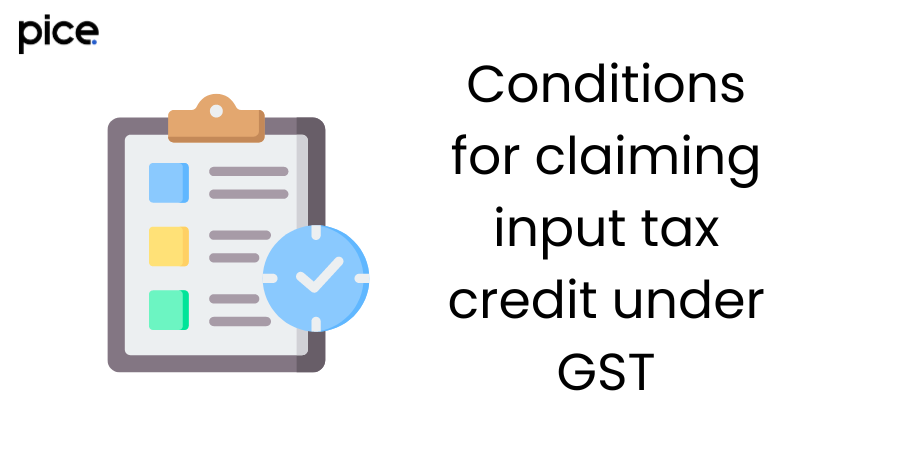
Here are the essential conditions for claiming input tax credit under GST:
- Registration under GST Law is mandatory.
- A valid tax invoice or debit note issued by a registered supplier showing the tax amount is required.
- The registered person must have received the corresponding goods or services.
- The supplier must have filed their annual returns and paid the tax for outward supplies to the government.
- In the case of goods supplied in parts or instalments, the tax can be claimed when the last part or instalment has been received.
- If ITC is included in the cost of capital goods and depreciation on such tax is claimed no further input tax credit is available.
- Input Tax Credit must be claimed within the specified time limit, or it will not be permitted.
Goods and Services Ineligible for ITC
Input Tax Credit cannot be claimed for certain items under GST rules, including:
- Purchases of motor vehicles or conveyances, except under specific circumstances.
- Any expenses related to motor vehicle or conveyance operations, including insurance.
- ITC on items such as food, beverages, beauty treatment, cosmetic surgery, outdoor catering, health services and plastic surgery.
- Selling membership of health and fitness centres or clubs.
- ITC on services like rent-a-cab, health insurance and life insurance.
- Travel benefits that are provided to employees.
- ITC on contract services used for constructing immovable property, except for plant and machinery.
- Goods or services purchased by a registered person opting for the composition scheme.
- Goods or services used for personal consumption.
- ITC on goods lost, stolen, destroyed, written off, or given as free samples.
- ITC related to taxes paid in cases involving fraud.
These are items for which input tax credit cannot be claimed under GST regulations.
Deadline for Claiming Input Tax Credit
According to Section 16(4) of the CGST Act 2017, taxpayers can claim pending Input Tax Credits (ITCs) until September of the following year or when filing the annual return GSTR-9 for the relevant financial year.
Any pending ITC beyond this period will expire and cannot be used to offset tax liabilities. It is advisable to claim ITC regularly, ideally on a monthly basis, through Form GSTR 2B reconciliation process and GSTR 3B filing. Accountants should be vigilant about these time limits, especially when handling complex transactions like imports and transactions with Special Economic Zones (SEZs).
Challenges Faced When Claiming Input Tax Credit
There are several issues that a taxpayer faces while availing the Input Tax Credit. These include:
- Missing Invoices in GSTR 2A: The supplier may not have included the invoice in GSTR 2A.
- Amendments to Invoices: Adjustments are needed for amendments that affect the final invoice amount.
- Excluded Transactions: Exclusions must be made for reverse charges and invoices that are exempted from tax.
Steps to Claim Input Tax Credit in GSTR 3B
Here are the steps taxpayers should follow to claim ITC in GSTR-3B:
Step 1: Download and review GSTR 2A for the financial year.
Step 2: Conduct a reconciliation process between their purchase register (books) and GSTR 2A to identify invoices meant for them, excluding any uploaded by suppliers in error.
Step 3: Find out the credits that the buyer is eligible to avail from the invoices in GSTR 2A.
Step 4: Ensure no duplicate claims for the same invoice.
Step 5: Verify that credit is claimed only for goods received before the filing date.
Step 6: Claim credit for old invoices uploaded by suppliers after the initial filing.
Notify vendors about invoices in their books of accounts that are missing from the Government Portal.
The Bottom Line
Understanding how to claim ITC in GSTR 3B is crucial for businesses to effectively manage their tax credits under the GST framework. This new GST return filing mechanism will help in simplifying the return filing and the tracking of ITC for business compliance. Moreover, staying proactive in claiming ITC and maintaining accurate records is key to maximising tax advantages and ensuring smooth operations under GST.from tax savings and to run a stress-free business under GST.
 By
By 








